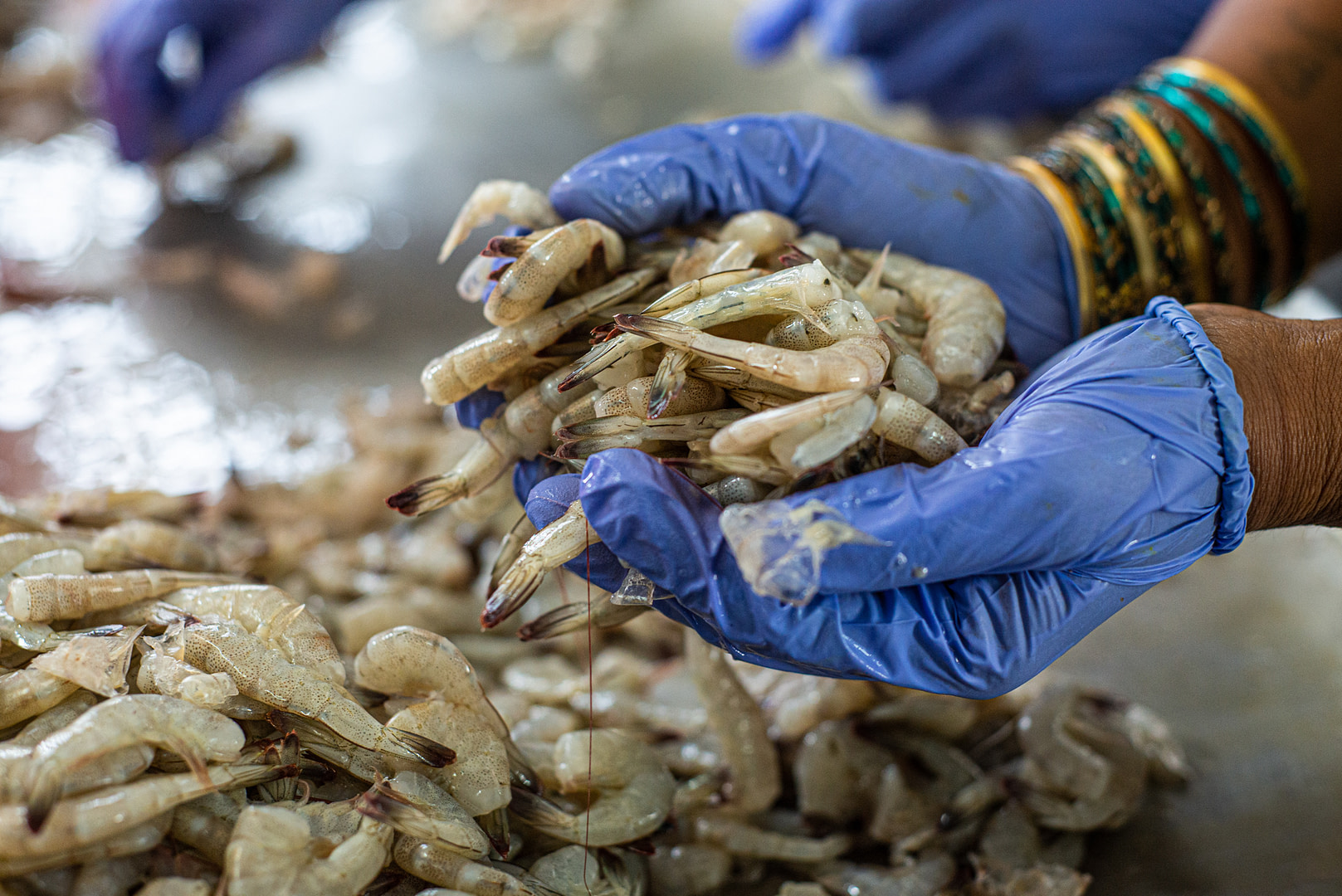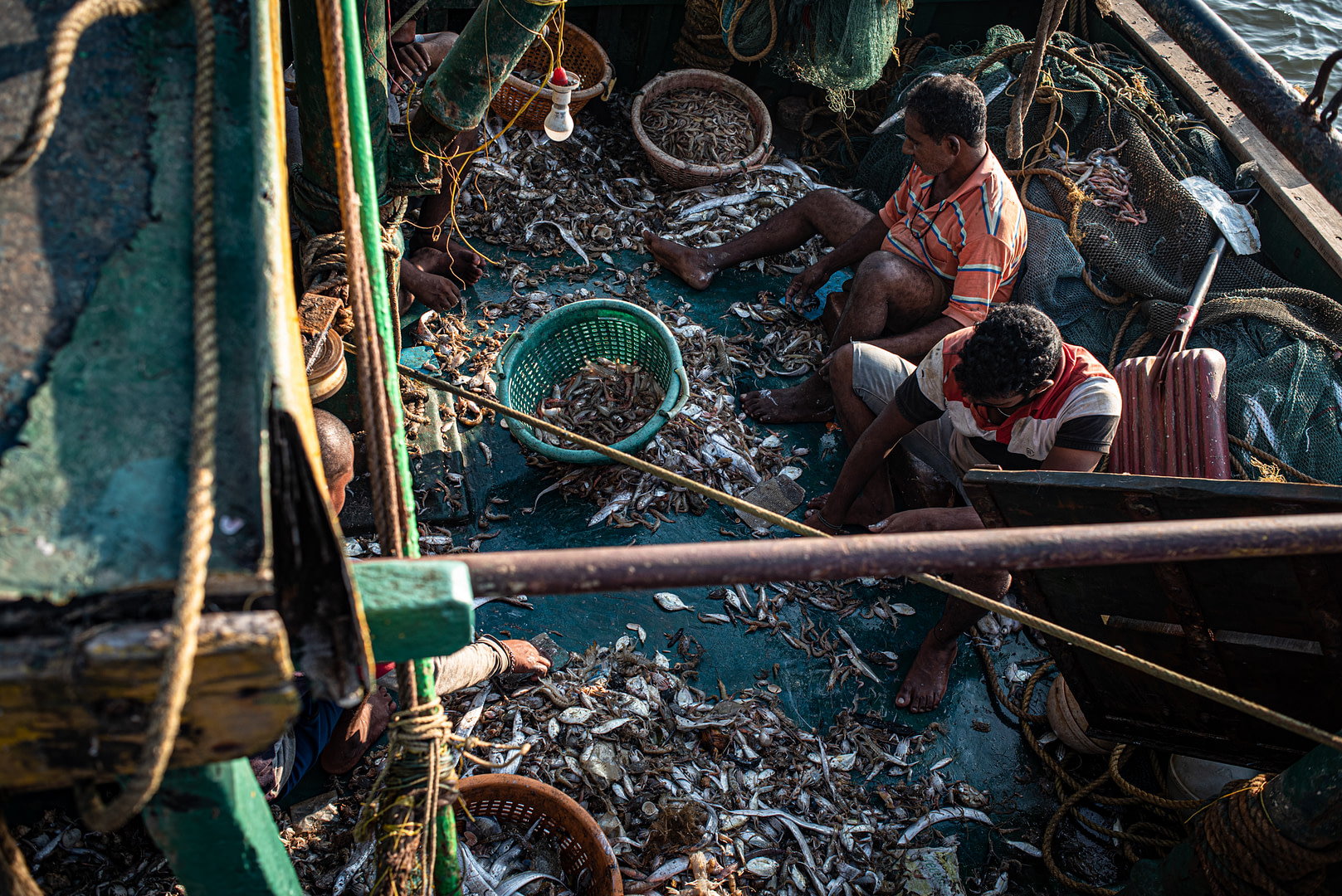From Source to Sale: Shrimp Farming and Fishing in India
We Animals Media photojournalist S. Chakrabarti recently documented India’s fishing and aquaculture industry – with a specific focus on shrimp production, one of the country’s main seafood exports.
“The one thing that struck me was actually seeing the quantity of animals being fished and farmed. India is the world’s second largest producer of whiteleg shrimp, producing a whopping 2.2 million metric tons. Reading such numbers just gave me an idea that it’s a lot. But to actually see just a small fraction of that number in reality as I saw boxes and boxes of shrimp and prawns in the processing plants, the farms, the fishing markets, the bycatch – that visual understanding was overwhelming.” ― S. Chakrabarti, animal photojournalist
India’s Shrimp Hatcheries and Aquaculture
Aquafarm operators use medications to control diseases and hormones to promote growth, which in recent years has led to concern over the use of antibiotics and banned medications; the government has in turn raided these farms and initiated awareness drives to limit their use.
“Eyestalk ablation”, which involves the removal of a female shrimp’s eyestalk to increase their egg production and force them to spawn, is still a common practice on many commercial farms, even though numerous studies have proven it to be highly stressful for the animals and recommend against it.
Like other forms of aquaculture, workers on these farms slaughter the shrimp by placing them in dry crates filled with ice. Scientific studies have concluded that ice causes thermal shock, keeping marine animals conscious and sensitive to pain for prolonged periods.
Commercial Fishing and Fish Markets in India
“With a huge coastline, India has a large number of artisanal and indigenous fishing communities, who have been fishing for generations. But what used to be sustainable because it was done in small numbers for local consumption and keeping in mind natural cycles, has now become a chain of demand and supply. The livelihoods of these communities are completely dependent on fishing. And even though India ranks amongst the top countries in fish and seafood production, the fishers and fishmongers remain lowest in the rung in this industry which generates billions.” ― S. Chakrabarti
More like this from We Animals Media:
Assignment: Inside Indonesia’s Shark Fin and Meat Trade
by We Animals Media | Dec 19, 2022
Investigation: Thai Fish Farms and Markets
by We Animals Media | Mar 9, 2022
New Investigation: Animal Markets – Northern India, 2021
by We Animals Media | Nov 17, 2021
















